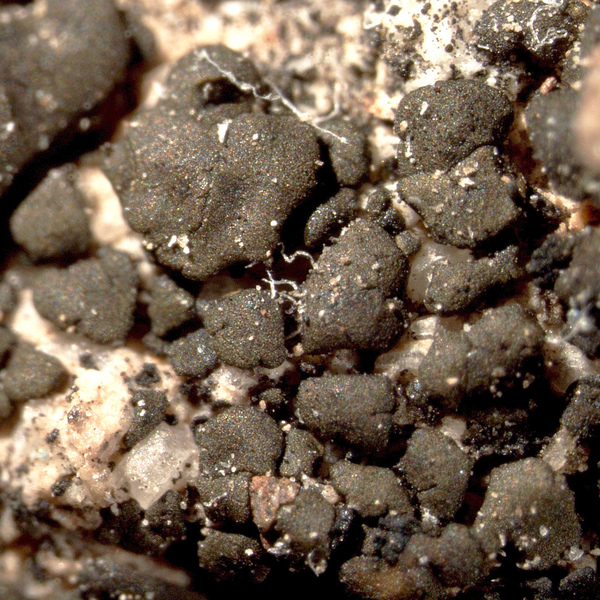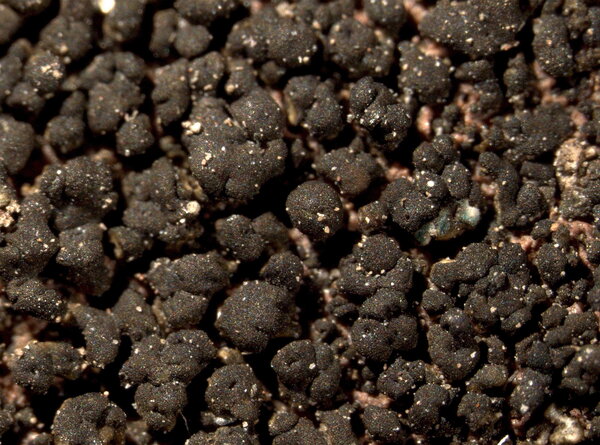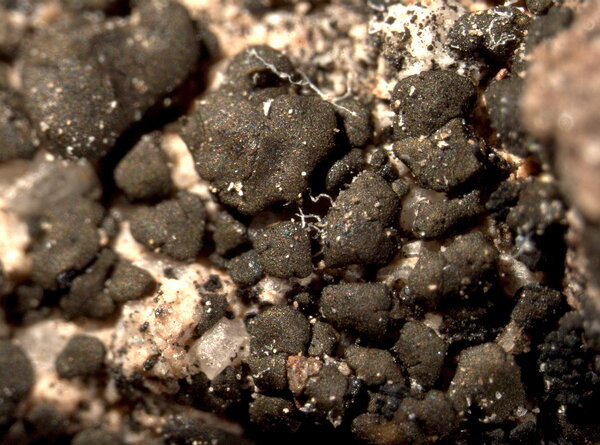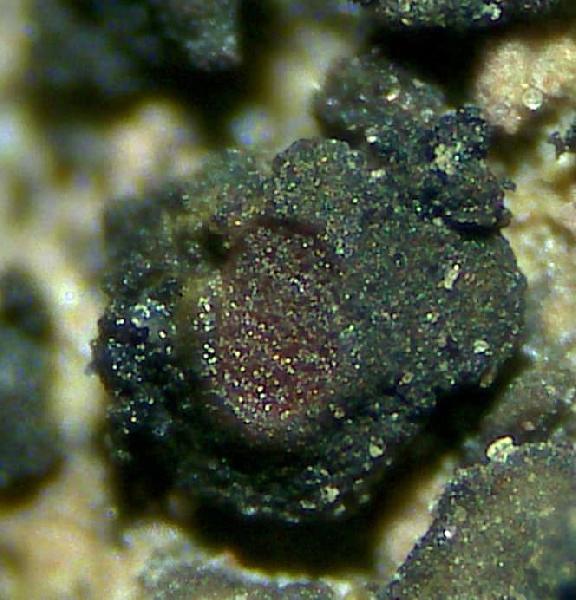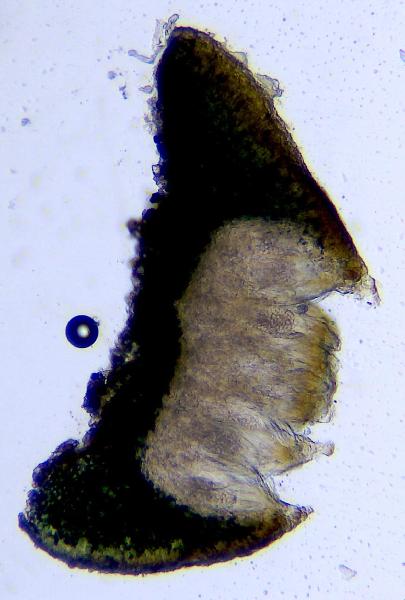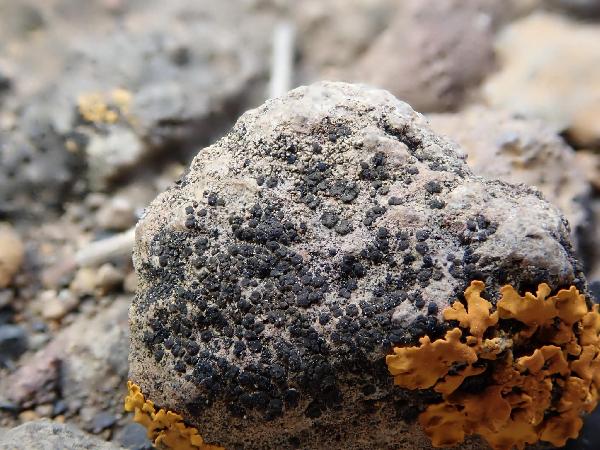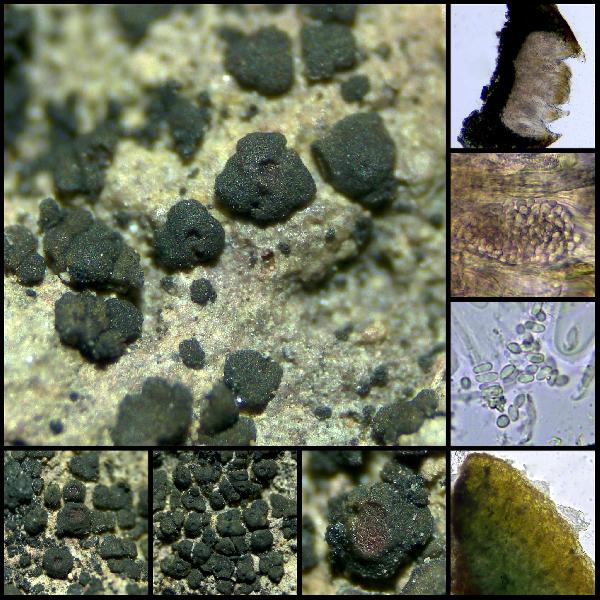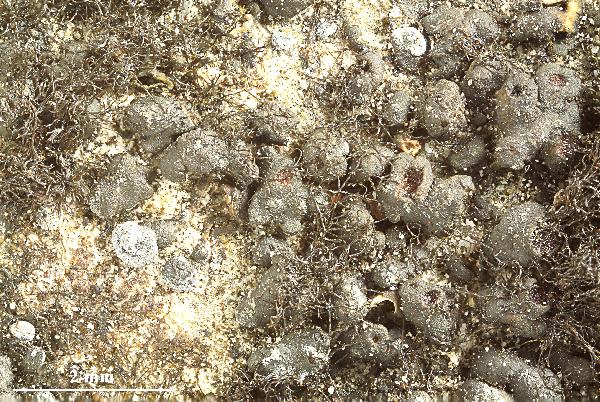Peltula obscurans (Nyl.) Gyeln.
Repert. Spec. Nov. Regni Veg., 38: 308, 1935. Basionym: Endocarpiscum obscurans Nyl. - Bull. Soc. Linn. Normandie, 2, 6: 309, 1872.
Synonyms: Acarospora collemacea Wedd.; Acarospora subglebosa (Müll. Arg.) Hue; Heppia acarosporoides Müll. Arg.; Heppia collemacea (Wedd.) Boistel; Heppia deserticola Zahlbr.; Peltula subglebosa (Müll. Arg.) Filson; Solorinaria collemacea (Wedd.) Gyeln.
Distribution: N - TAA, Lig. C - Tosc, Laz, Sar (Rizzi & al. 2011). S - Si (Nimis & al. 1996b).
Description: Thallus squamulose-umbilicate, heteromerous, the squamules entire to dissected, flat to convex, up to 2 mm wide, olive-brown to dark brown when dry, almost black when wet, dispersed or contiguous, sometimes overlapping; lower surface paler than the upper surface, attached by a more or less central, branched holdfast. Upper cortex not developed, but upper surface with a yellowish epinecral layer; medulla consisting of loosely interwoven hyphae and partly paraplectenchymatous; photobiont layer well-delimited, 90-180 µm thick; lower cortex hardly distinguishable from the medulla. Apothecia 1-2 per squamule, at fist immersed, then adnate, 0.3-1 mm across, with an initially punctiform, later slightly expanded, reddish brown to brown disc and a thin thalline margin. Proper exciple thin; epithecium yellowish brown, K+ red-violet or rarely K-; hymenium colourless, I+ wine-red, 70-150 µm high. Asci >100-spored, clavate to obclavate, rostrate, the wall I+ orange, K/I+ blue. Ascospores 1-celled, hyaline, ovoid to ellipsoid, 4.5-7(-9) x 2-4 µm. Pycnidia immersed, cerebriform. Conidia ovoid-fusiform, 3.1-3.7 x c. 1.2 µm. Photobiont cyanobacterial, chroococcoid, one-celled. Spot tests: thallus and medulla K-, C-, KC-, P-, UV-. Chemistry: without lichen substances.Note: on steeply inclined seepage tracks of basic siliceous rocks and on compacted mineral soil in lowland areas; a southern, mainly Mediterranean species in Europe, often found together with P. euploca when on rock, but much less frequent in Italy.
Growth form: Foliose, umbilicate
Substrata: rocks, soil, terricolous mosses, and plant debris
Photobiont: cyanobacteria, filamentous (e.g. Nostoc, Scytonema)
Reproductive strategy: mainly sexual
On otherwise dry surfaces with short periods of water seepage after rain
Commonnes-rarity: (info)
Alpine belt: absent
Subalpine belt: absent
Oromediterranean belt: absent
Montane belt: absent
Submediterranean belt: extremely rare
Padanian area: absent
Humid submediterranean belt: very rare
Humid mediterranean belt: rare
Dry mediterranean belt: very rare

Predictive model
Herbarium samples
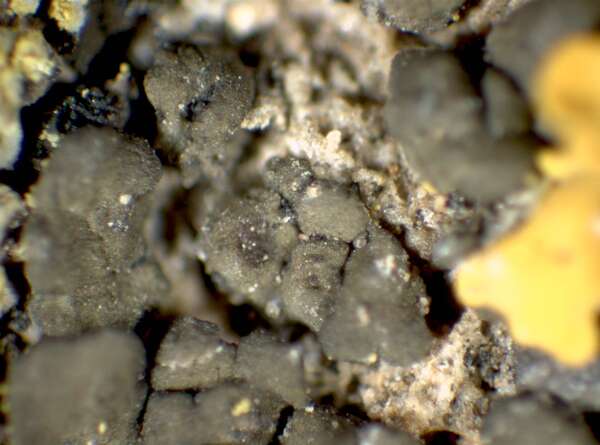

P.L. Nimis; Owner: Department of Life Sciences, University of Trieste
Herbarium: TSB (10057)
2001/11/28
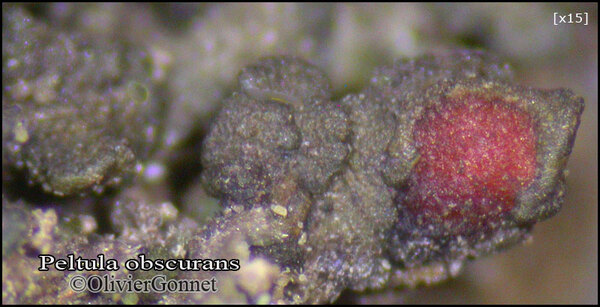
Courtesy Danièle et Olivier Gonnet - Source: https://www.afl-lichenologie.fr/Photos_AFL/Photos_AFL_P/Text_P_4/Peltula_obscurans.htm
France, 19/10/2012 - col Santo Stefano, défilé de Lancone, alt. 333 m - sur roche - Corse
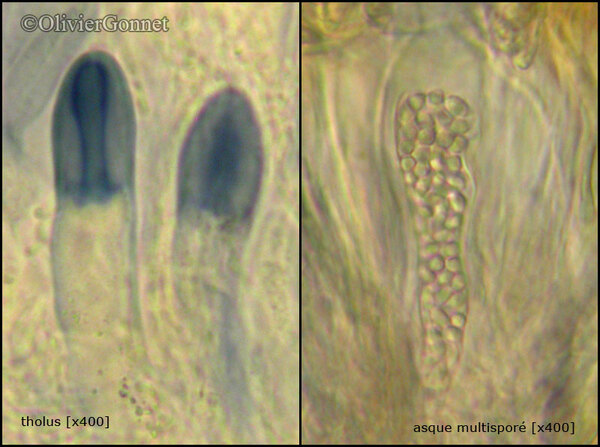
Courtesy Danièle et Olivier Gonnet - Source: https://www.afl-lichenologie.fr/Photos_AFL/Photos_AFL_P/Text_P_4/Peltula_obscurans.htm
France, 19/10/2012 - col Santo Stefano, défilé de Lancone, alt. 333 m - sur roche - Corse
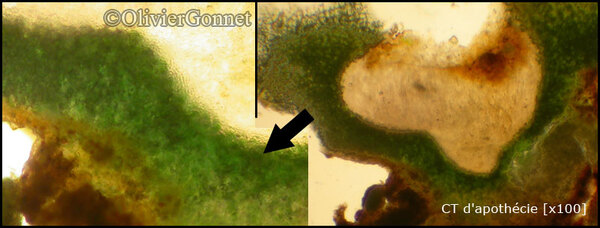
Courtesy Danièle et Olivier Gonnet - Source: https://www.afl-lichenologie.fr/Photos_AFL/Photos_AFL_P/Text_P_4/Peltula_obscurans.htm
France, 19/10/2012 - col Santo Stefano, défilé de Lancone, alt. 333 m - sur roche - Corse
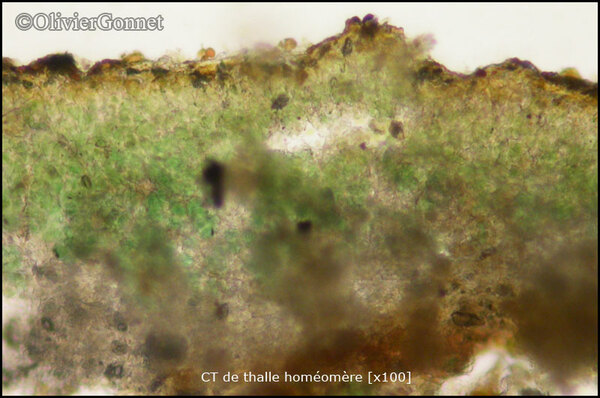
Courtesy Danièle et Olivier Gonnet - Source: https://www.afl-lichenologie.fr/Photos_AFL/Photos_AFL_P/Text_P_4/Peltula_obscurans.htm
France, 19/10/2012 - col Santo Stefano, défilé de Lancone, alt. 333 m - sur roche - Corse
Growth form: Foliose, umbilicate
Substrata: rocks, soil, terricolous mosses, and plant debris
Photobiont: cyanobacteria, filamentous (e.g. Nostoc, Scytonema)
Reproductive strategy: mainly sexual
On otherwise dry surfaces with short periods of water seepage after rain
Commonnes-rarity: (info)
Alpine belt: absent
Subalpine belt: absent
Oromediterranean belt: absent
Montane belt: absent
Submediterranean belt: extremely rare
Padanian area: absent
Humid submediterranean belt: very rare
Humid mediterranean belt: rare
Dry mediterranean belt: very rare

Predictive model
| Herbarium samples |


P.L. Nimis; Owner: Department of Life Sciences, University of Trieste
Herbarium: TSB (10057)
2001/11/28

Courtesy Danièle et Olivier Gonnet - Source: https://www.afl-lichenologie.fr/Photos_AFL/Photos_AFL_P/Text_P_4/Peltula_obscurans.htm
France, 19/10/2012 - col Santo Stefano, défilé de Lancone, alt. 333 m - sur roche - Corse

Courtesy Danièle et Olivier Gonnet - Source: https://www.afl-lichenologie.fr/Photos_AFL/Photos_AFL_P/Text_P_4/Peltula_obscurans.htm
France, 19/10/2012 - col Santo Stefano, défilé de Lancone, alt. 333 m - sur roche - Corse

Courtesy Danièle et Olivier Gonnet - Source: https://www.afl-lichenologie.fr/Photos_AFL/Photos_AFL_P/Text_P_4/Peltula_obscurans.htm
France, 19/10/2012 - col Santo Stefano, défilé de Lancone, alt. 333 m - sur roche - Corse

 INDEX FUNGORUM
INDEX FUNGORUM
 GBIF
GBIF
 DOLICHENS
DOLICHENS
